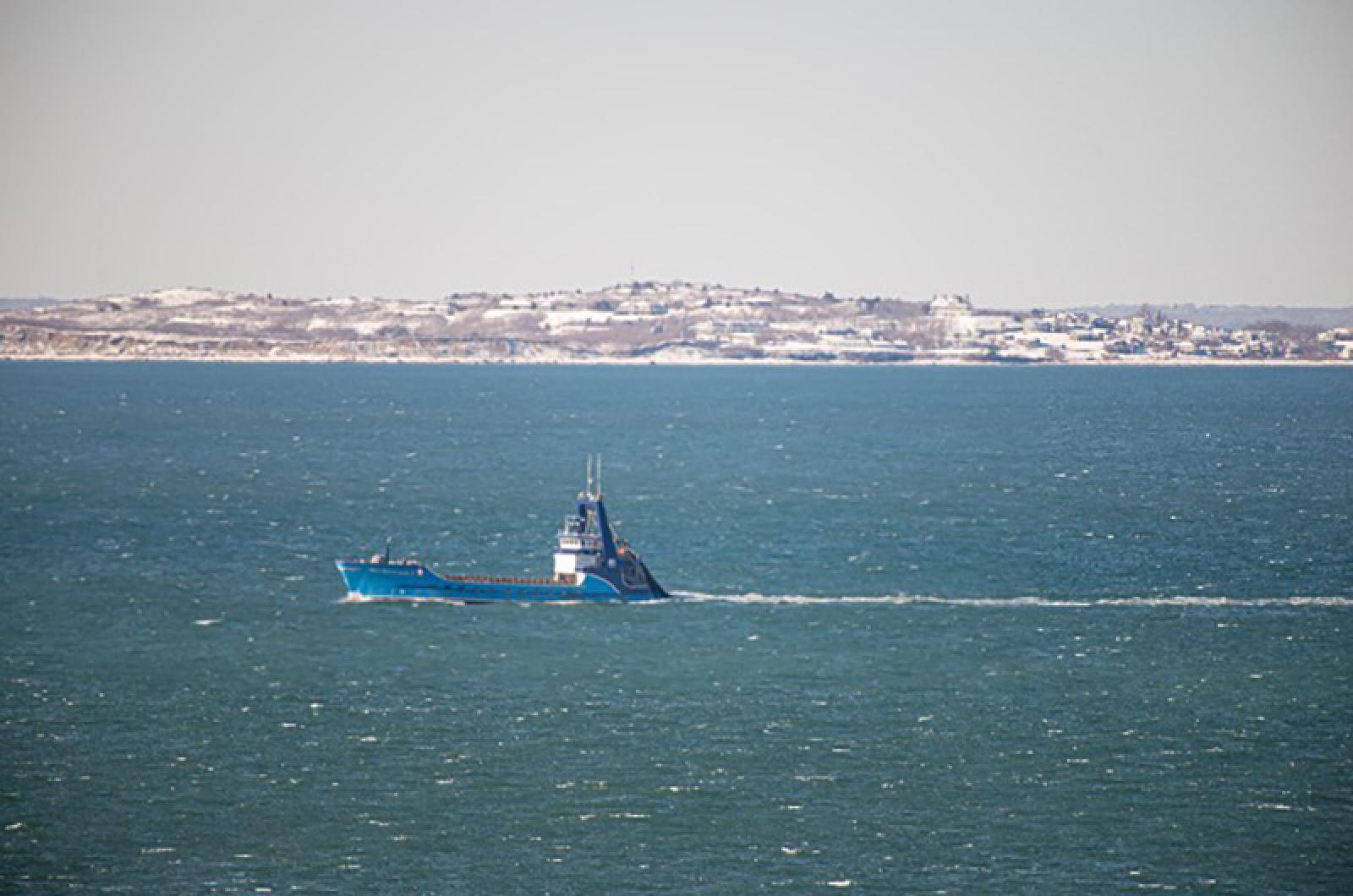A sweeping new state report on ocean acidification in the commonwealth recommends legislators urgently update pollution regulations and take other immediate steps to mitigate the impacts of acidifying waters on the growing — but threatened — state aquaculture industry.
Led by Cape and Islands Rep. Dylan Fernandes and state Sen. Julian Cyr, an 18-member state commission compiled the report over the past year, meeting nearly 30 times with scientists from the Woods Hole Oceanographic Institution, the New England Aquarium and The Nature Conservancy.
The final 84-page report was released Tuesday morning, detailing in stark language the threats posed by a rapidly acidifying ocean and the recommended steps to combat it.
In a presentation Tuesday morning, Mr. Cyr and Mr. Fernandes, along with researchers and scientists from WHOI and the New England Aquarium, said the report lays out a 15-year plan for state efforts to fight ocean acidification.
“Our commission was not to fix the global climate crisis — I wish we could,” Mr. Fernandes said. “It was really to tackle what Massachusetts can control in our coastal waterways. And our report reflects that commitment to mitigating acidification resulting from local nutrient pollution.”
According to the report, Massachusetts waters will be disproportionately affected by ocean acidification, with acidity doubling by 2100 due to carbon emissions and septic runoff. In southeastern Massachusetts, including the Vineyard, the acidification process has been accelerated by septic systems and wastewater runoff, according to the report.
The impacts of a more acidic ocean are particularly dire for the state’s $450 million shellfishing industry, threatening the health of sea scallops, eastern oysters and other mollusks. As the pH of ocean water decreases, shellfish have a harder time surviving and form weaker shells, the report concludes.
“All models agree that shellfishing economies will suffer as a result of ocean acidification. The degree of harm that occurs will depend on the extent of mitigation efforts undertaken now,” the report says.
Recommendations in the report include immediate legislative action to establish more state grant funding for threatened coastal towns through a so-called Blue Communities Program. In the same way the state’s Green Communities Division incentivizes towns to build green infrastructure, the program would require municipalities to adopt zoning changes for future development that reduce storm water and agricultural runoff.
The report also suggests creating a real-time, statewide ocean acidity monitoring system so shellfishermen and aquaculture farmers can respond to changing pH levels in the water, as well as introducing legislation to form an ocean acidification council and trust.
“This process is very urgent,” Mr. Fernandes said. “We can’t make any process on ocean acidification if we aren’t adequately tracking it.”
Mr. Cyr emphasized the need to act fast to address the wastewater problem, saying that the Cape had been historically lackadaisical, particularly in the high development years of the 1970s and 1980s. But he pointed to new measures, like a 2.75 per cent room occupancy fee to help fund wastewater improvements, as steps in the right direction.
“Have we been too slow? Absolutely. Are we moving a heck of a lot faster now? Yes,” he said. “I think that’s really thanks to the real collaborative approach and leadership the region has taken.”
The presentation Tuesday included testimony from Seth Garfield, president of the state aquaculture association, Steve Kirk, coastal program manager for The Nature Conservancy and scientists and program directors from WHOI and the New England Aquarium.
Mr. Fernandes concluded by saying it was time to take the report to the state house floor, with the first course of action the creation of a standing fund used to mitigate ocean acidification.
“We can begin to translate these findings into action,” he said.







Comments (15)
Comments
Comment policy »